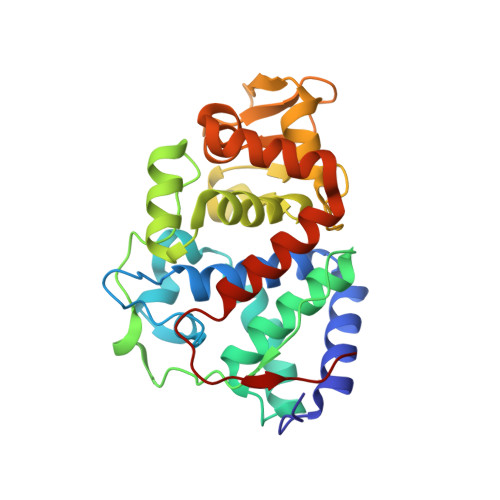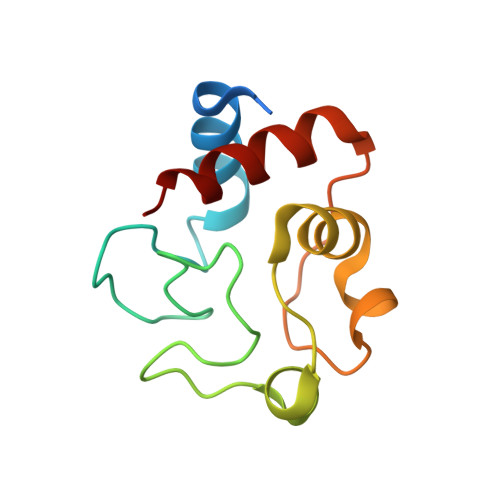Crystal structure of the Leishmania major peroxidase-cytochrome c complex.
Jasion, V.S., Doukov, T., Pineda, S.H., Li, H., Poulos, T.L.(2012) Proc Natl Acad Sci U S A 109: 18390-18394
- PubMed: 23100535
- DOI: https://doi.org/10.1073/pnas.1213295109
- Primary Citation of Related Structures:
4GED - PubMed Abstract:
The causative agent of leishmaniasis is the protozoan parasite Leishmania major. Part of the host protective mechanism is the production of reactive oxygen species including hydrogen peroxide. In response, L. major produces a peroxidase, L. major peroxidase (LmP), that helps to protect the parasite from oxidative stress. LmP is a heme peroxidase that catalyzes the peroxidation of mitochondrial cytochrome c. We have determined the crystal structure of LmP in a complex with its substrate, L. major cytochrome c (LmCytc) to 1.84 Å, and compared the structure to its close homolog, the yeast cytochrome c peroxidase-cytochrome c complex. The binding interface between LmP and LmCytc has one strong and one weak ionic interaction that the yeast system lacks. The differences between the steady-state kinetics correlate well with the Lm redox pair being more dependent on ionic interactions, whereas the yeast redox pair depends more on nonpolar interactions. Mutagenesis studies confirm that the ion pairs at the intermolecular interface are important to both k(cat) and K(M). Despite these differences, the electron transfer path, with respect to the distance between hemes, along the polypeptide chain is exactly the same in both redox systems. A potentially important difference, however, is the side chains involved. LmP has more polar groups (Asp and His) along the pathway compared with the nonpolar groups (Leu and Ala) in the yeast system, and as a result, the electrostatic environment along the presumed electron transfer path is substantially different.
Organizational Affiliation:
Department of Molecular Biology and Biochemistry, University of California, Irvine, CA 92697, USA.



















